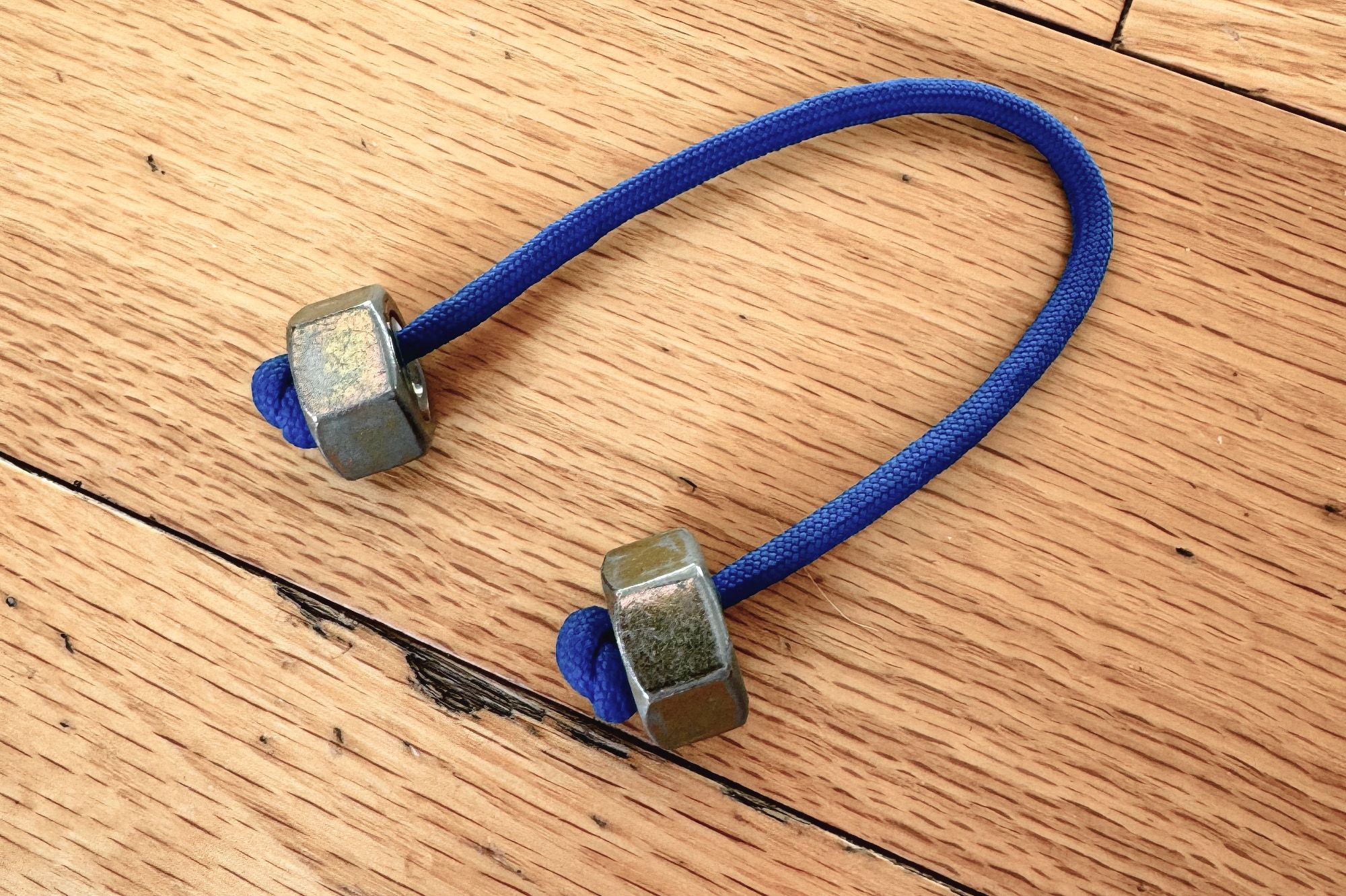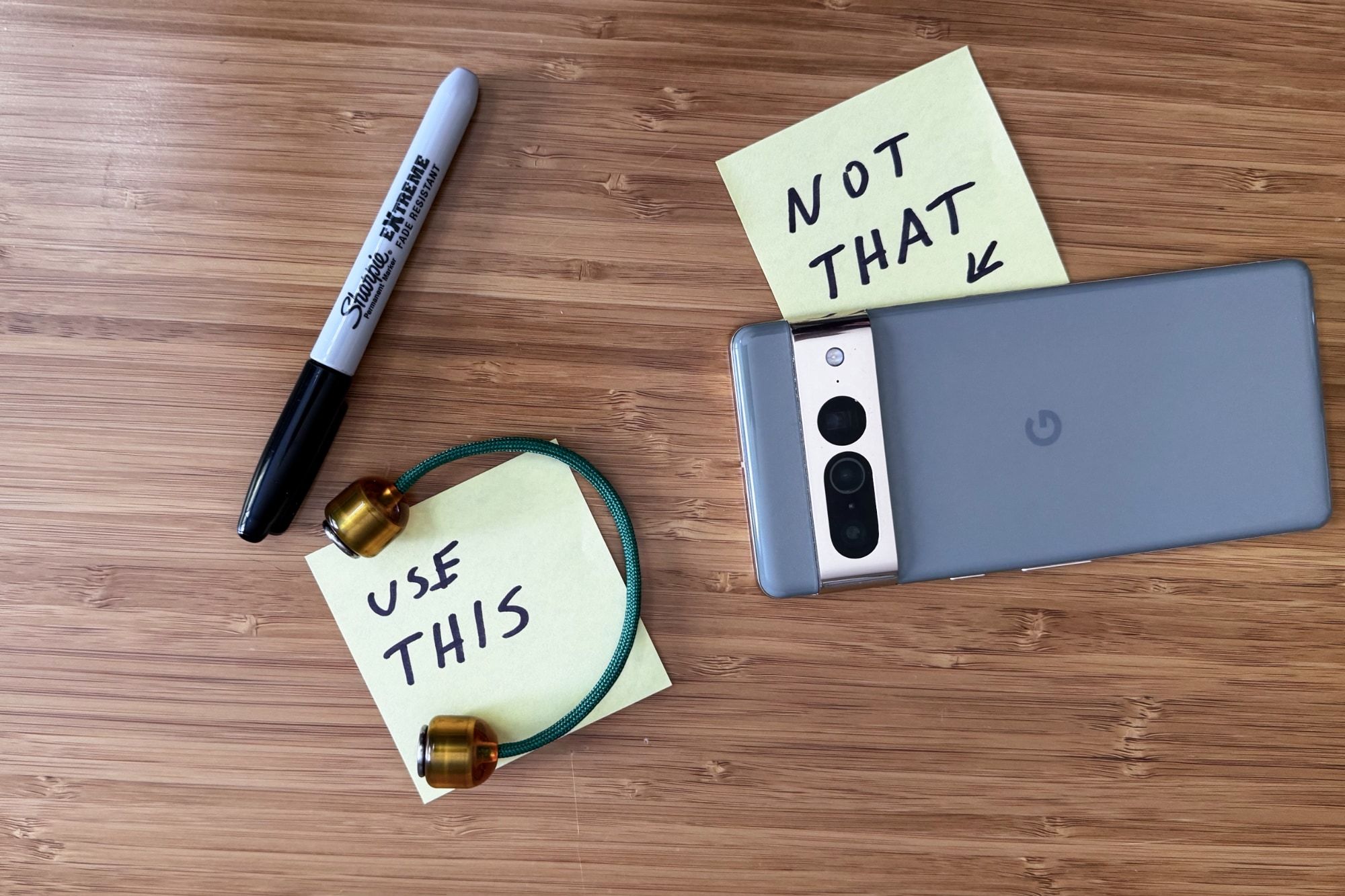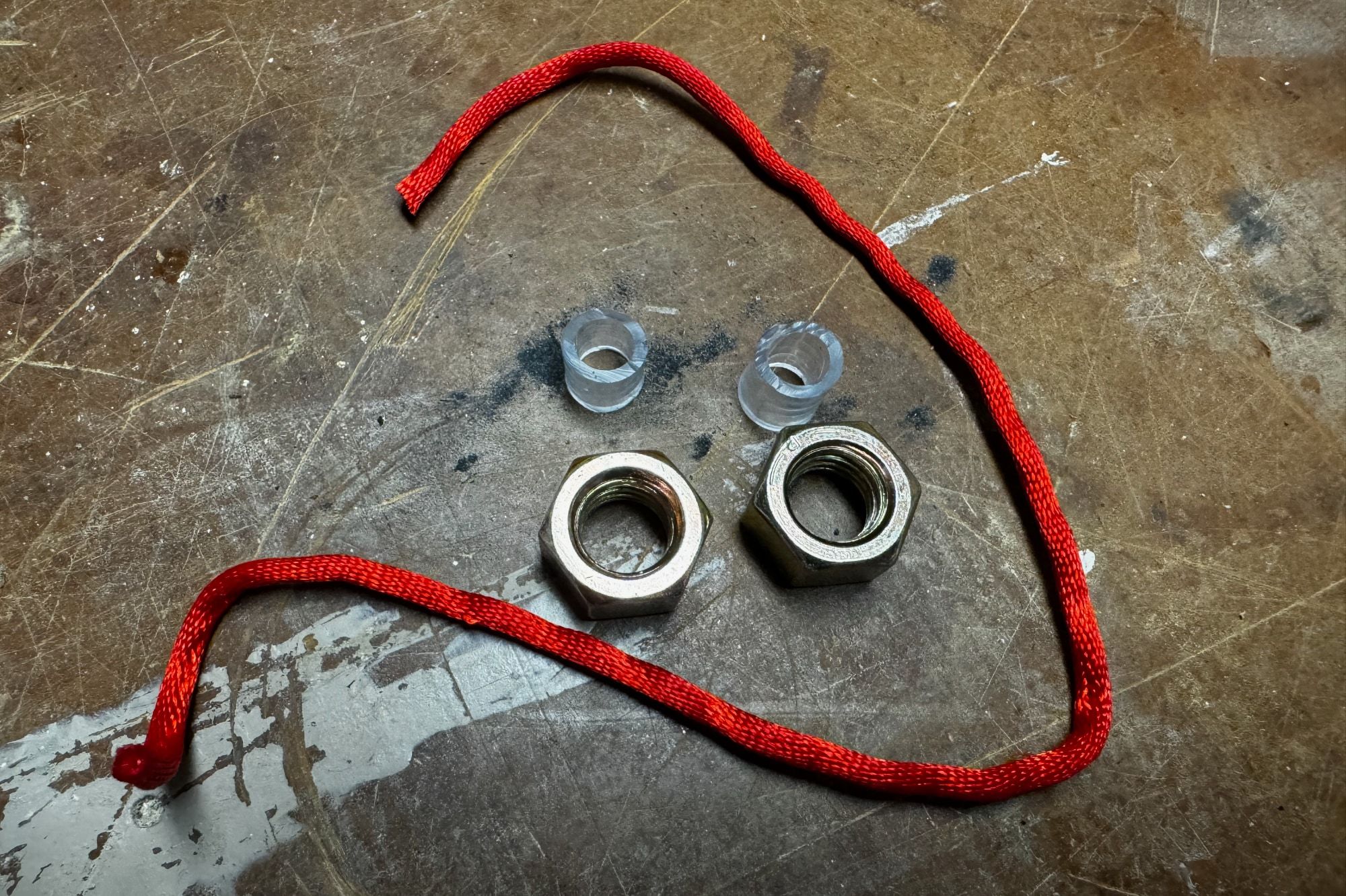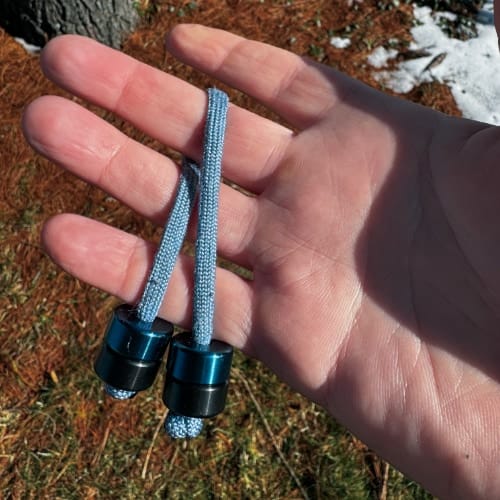I've been obsessed with a simple toy for a few months now. It's two beads on a string, and it's called a begleri.

The beads are small: Hex nuts work well. The string is short, this isn't a yoyo type of thing. You flip it around using the momentum of the beads and flicks of your fingers, passing it between various grips, sometimes tossing it in the air if you're feeling ambitious.
There are a few things that make the begleri work for me: It's small and fits in any pocket, it's pretty quiet most of the time (at least until you drop it), and the finger movement patterns used are almost the opposite of those used when typing. But above all else, it's just plain fun.
The distance from being a clueless beginner to having a bit of fun is measured in minutes, not days of arduous practice. The beginner-level tricks (rebounds and grip changes, for example) are simple and intuitive.
Personally, I'm attracted to it as a simple fidget toy — not trying to impress anyone (or myself) with complicated tricks. So those few basic tricks are pretty much all I do. Sometimes I find myself reaching for a begleri instead of my phone, and that makes me happy.

Another thing that makes it easy to get started is how DIY-friendly it is. I have several sets I made from hex nuts, some vinyl tubing, and paracord. Each set costs under $2 to make. Making one takes five minutes, and they work just as well as the nice sets I bought online.

That said, there certainly are very nice sets online. A company I quite like is AroundSquare, which is (you guessed it) another small indie business. Here's a video where they show off some of their begleri and what you can do with a toy like this when you put in the time:
You'll need to size your begleri for your own hand. There are a few ways, but the one that works for me is this:

When you grip the toy in this particular way, the beads should end up right below your pinky. Then you know you've got the length right, and the tricks work.
Some tricks are better with a shorter string (they call this "short game") — so you just tie a simple knot in your string and play like that for a while.
Now, a word on RSI: When we break down the acronym, the first two words are "repetitive" and "stress". With an ergonomic keyboard, you do a lot to reduce that second element, stress. Less reaching, less stretching.
What about the "repetitive" part, though? Typing is still typing — it's the same movement pattern. That's where a toy like this comes in, for me. Instead of pushing down, my fingers flick out. Instead of spreading out, they pinch or grip. Instead of being relatively static, my wrist rotates in ways that feel healthy.
Of course, you can overdo it — begleri itself is repetitive, especially when used like I use it (focusing on the simple basic fidget-like movements). But when you don't overdo it, and when you combine it with typing, you get more varied movement. I also feel it can help with skills like finger isolation (being able to use fingers individually) and even reaction speed, which can translate to typing efficiency and comfort.
Of course, that's just my personal opinion and my experience, but at $2 it's easy enough to try. Be careful, though, you might end up with a bit of a collection.

The Surprise
The biggest surprise with begleri is that it's still fun and interesting for me after months of daily use. I like the occasional skill toy: I have a yoyo that I'm not very good with, and some others. But none have held my interest for as long as the begleri has.
The second surprise is the difference in play quality between a "commercial" set and a DIY one: There isn't much. I don't regret buying the ones in my collection: I'm glad I have all of these fun toys, and I'm happy to support the small business that made them. But at my basic skill level, there isn't anything I can do with a commercial begleri that I can't do with a set I made myself.


